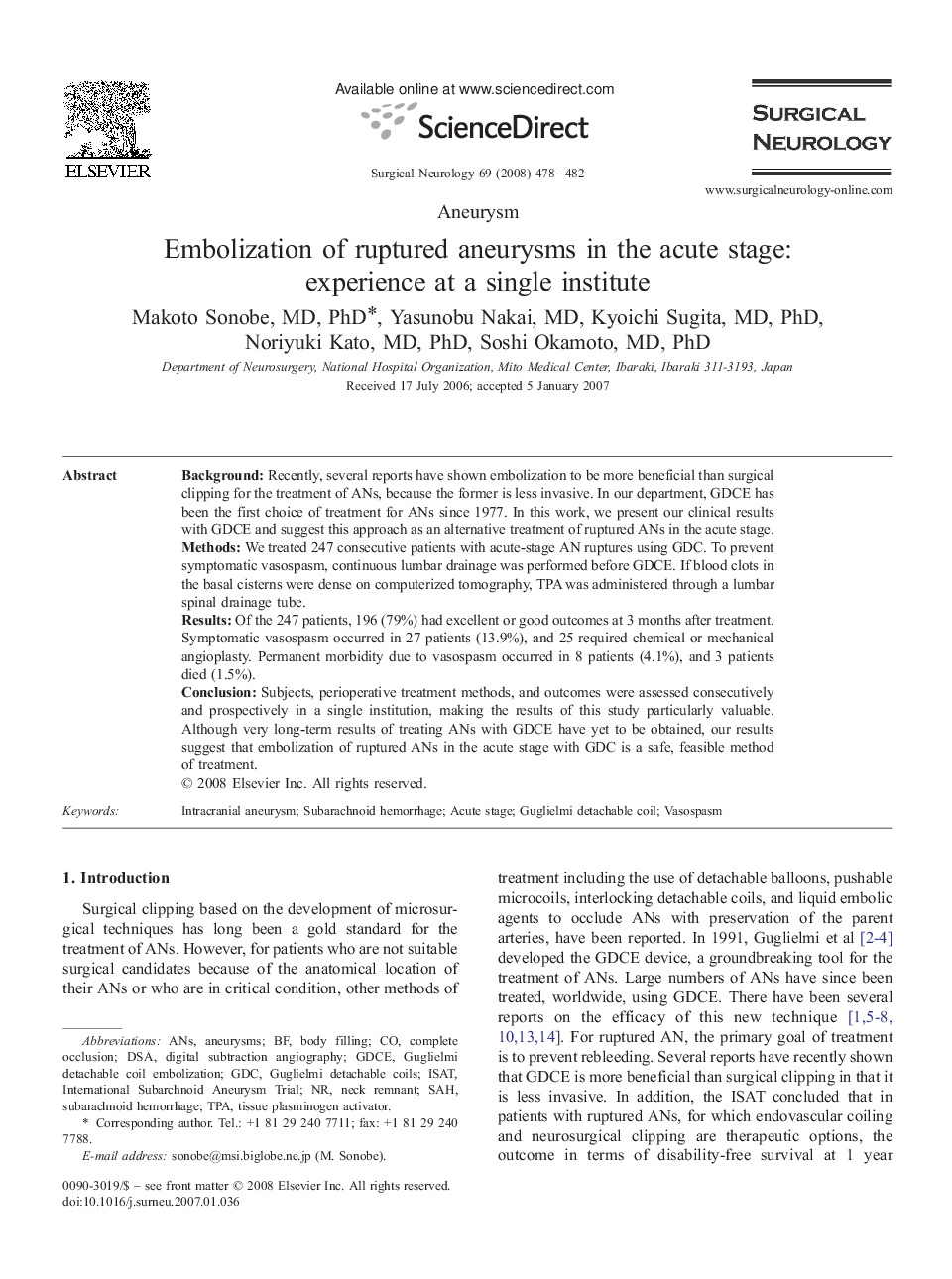| Article ID | Journal | Published Year | Pages | File Type |
|---|---|---|---|---|
| 3093047 | Surgical Neurology | 2008 | 5 Pages |
BackgroundRecently, several reports have shown embolization to be more beneficial than surgical clipping for the treatment of ANs, because the former is less invasive. In our department, GDCE has been the first choice of treatment for ANs since 1977. In this work, we present our clinical results with GDCE and suggest this approach as an alternative treatment of ruptured ANs in the acute stage.MethodsWe treated 247 consecutive patients with acute-stage AN ruptures using GDC. To prevent symptomatic vasospasm, continuous lumbar drainage was performed before GDCE. If blood clots in the basal cisterns were dense on computerized tomography, TPA was administered through a lumbar spinal drainage tube.ResultsOf the 247 patients, 196 (79%) had excellent or good outcomes at 3 months after treatment. Symptomatic vasospasm occurred in 27 patients (13.9%), and 25 required chemical or mechanical angioplasty. Permanent morbidity due to vasospasm occurred in 8 patients (4.1%), and 3 patients died (1.5%).ConclusionSubjects, perioperative treatment methods, and outcomes were assessed consecutively and prospectively in a single institution, making the results of this study particularly valuable. Although very long-term results of treating ANs with GDCE have yet to be obtained, our results suggest that embolization of ruptured ANs in the acute stage with GDC is a safe, feasible method of treatment.
